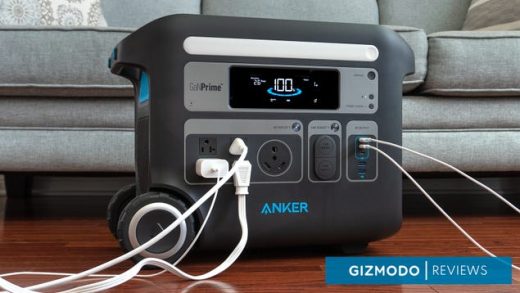Manmeet Maggu and Rahul Udasi didn’t know it when they met at the University of Waterloo eleven years ago, but the bond that the two forged in late night study sessions as roommates in the UW Place dorm has helped power their work building an exoskeleton that allows children with disabilities to walk.
The fruit of that labor is Trexo Robotics, which will graduate as part of the latest batch of Y Combinator’s winter 2019 cohort.
In the three years since Udasi and Maggu launched their company, Trexo has gone through the Techstars accelerator program in New York and raised $720,000 in seed funding. But the roots of the company extend back to Maggu’s senior year at Waterloo, when he learned that his nephew in India had been diagnosed with cerebral palsy.
The disease, which affects millions around the world and at least 500,000 children in the U.S. alone, was not something that Maggu had known much about. But with the diagnosis of his nephew, he began to learn.
“We started looking at what cerebral palsy is and what it would mean to him,” says Maggu. “For him it meant that he would spend his entire life in the wheelchair and I knew the tremendous negative health effects associated with sitting.”
At first, the family looked at ways to encourage the child to walk outside of physical therapy, with no results.
“Initially we were like, let’s buy him a robotics system or an exoskeleton, but after looking around we saw that there was nothing out there,” says Maggu.
That’s when Maggu determined that he would make the development of the exoskeleton the focus of his senior design thesis, back in 2012.
Trexo co-founders Manmeet Maggu and Rahul Udasi (Image courtesy of Trexo Robotics)
“After that everybody went our own ways but I couldn’t stop working on this,” Maggu recalls. “I kept working on this on the side. I was just working in my apartment doing design, doing 3D printing there.”
By that time, Maggu and Udasi had gone their separate ways. Maggu worked on the project on the side while pursuing his career in the technology industry. He worked at Blackberry and Qualcomm, but kept in touch with his college friend, Udasi, had worked for a spell at Willow Garage and a few other robotics companies, before returning to Canada to study for a masters degree in robotics at the University of Toronto.
Maggu had also returned to Toronto to work on a masters in business administration.
But throughout that time, using a low-end printer that he bought for $600, Maggu kept prototyping. Then, when the two were living together, Maggu would ask Udasi, the robotics expert, for his help.
By 2017 the two men had developed a functioning prototype and flown to India to give it to their first test patient — Maggu’s nephew.
“The first time we tried it it didn’t work,” says Maggu. “But my brother has a factory in India in Delhi, so we made some more modifications and tried it out again and I watched my nephew try to walk with the device for the first time.”
After progressing through the Techstars accelerator and raising its seed round, Trexo now has around six versions of its exoskeletons in private homes and hospitals. The company is conducting a clinical study at the Cincinnati Children’s Hospital and has four paying customers in Canada.
These are still devices that aren’t affordable for most Americans — not by a longshot. Trexo is pursuing a direct-to-consumer approach that would see their technology selling for $899 per month through a lease model with a $1,000 down payment and financing for 36 months. Customers can also lease the product for $999 with at least a required 12 month lease period or they can buy a Trexo exoskeleton for $29,900.
The company is marketing the device as an exercise and therapy device, which means that it can avoid some of the regulatory requirements to bring the product to market under the current regulations from the Food and Drug Administration, which oversees medical devices.
Maggu and Udasi ultimately see Trexo tackling more than just treatment for children with mobility issues. Indeed, Maggu sees opportunities for the company to begin developing products for elder care as well.
“We view this as much more of a consumer product,” says Maggu. “We strongly believe that wearable robotic systems are going to play a huge role in the future to come.”
Source : Helping children overcome their mobility challenges, Trexo Robotics gets a Y Combinator boost









